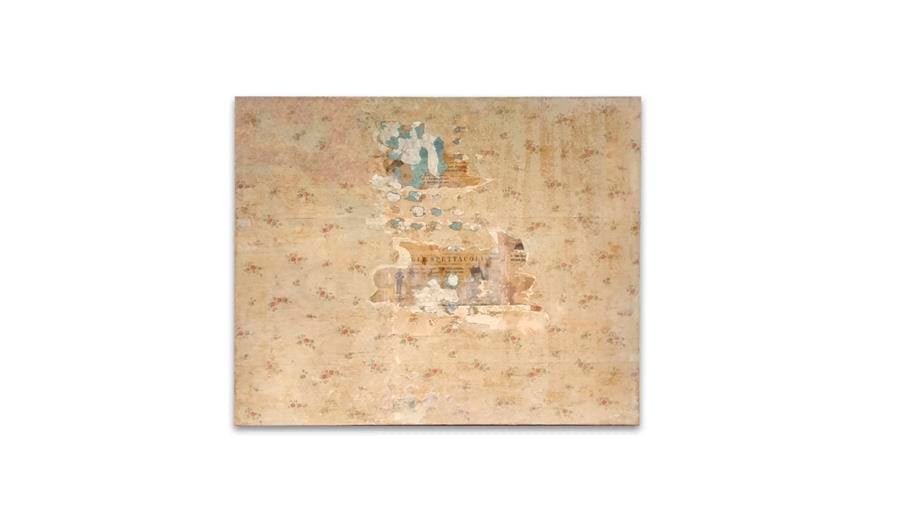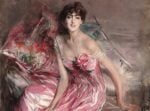Gian Maria Tosatti – Damasa

Mostra personale
Comunicato stampa
Damasa è il nome che vorrei dare a mia figlia.
Ho quasi quarant’anni.
Forse è il nome che dovrei darle.
…
Anna Maria Ortese diceva che le antenne
delle televisioni sui tetti delle case
fuori dalla sua finestra
assomigliavano ad alberi di navi.
Per questo le sembrava di non aver mai lasciato Napoli.
…
C’era una canzone di un autore che non ricordo
Parla di Piero Ciampi.
“Maledetti amici” credo si chiami.
- Per voi mi sono perso anche una moglie – dice.
…
Ho avuto degli amici.
Non ne è rimasto granché.
A volte faccio di nuovo amicizia.
E’ una cosa in cui continuo a credere.
…
Un amico un giorno disse
che l’Austria avrebbe perso
il suo miglior poeta durante una festa nazionale.
A capodanno del 1994 si suicidò.
…
Guardo questa mostra. Ha la stessa impudicizia dello specchio del mio bagno. Si espone come un non-finito di per sé, con oggetti sospesi dentro e fuori la cinghia stretta della realtà. Ma qui a Napoli della realtà non interessa a nessuno. E allora tutto si rilassa. Gli oggetti riposano. Trovano tregua temporanea sulla cenere. I pezzi, di volto, di corpo, di carne. I nomi, le facce. Le cose trovate, le cose perse. Gli occhiali dimenticati sulla testa. Ci sono persone che scantonano tra queste mura, che non ho mai incontrato, e che pure sono lì, sedute nell’ombra che faccio. Che mi aspettano. Mi cristallizzano il pane prima che lo porti alla bocca. Mi accendono le stelle del lampadario della cucina. In questa mostra sono sfacciatamente esposti gli appunti presi in una pausa di respiro. Con l’oro di Napoli. Con i frantumi dei compagni di strada che sono il lastricato stesso della strada. Questa mostra è un imbroglio di fili sospesi, è lo ieri prima del domani. E’ una riflessione sulla pittura, sul suo decollo e la sua ricaduta. Ci sono ancora righe e striscioline di un romanzo che qualcuno continua a infilarmi nelle tasche, Alessandro, Antonio, Lucrezia, Anna Maria, Elvira. Alla fine non conta niente altro. Questo perimetro umano fatto di lati che stanno tra i volumi di esistenze. Questo filo sottile. La delicatezza dell’anima mia. E la sua pesantezza. Il rammarico di non poter bere un bicchiere d’acqua con qualcuno.
Gian Maria Tosatti (Roma, 16.04.1980 - vive a New York) ha compiuto la sua formazione nel campo performativo, presso il Centro per la Sperimentazione e la Ricerca Teatrale di Pontedera. Nel 2005 torna a Roma per intraprendere un percorso artistico nel territorio di connessione tra architettura e arti visive realizzando principalmente grandi installazioni site specific. I suoi progetti, abitualmente, sono indagini a lungo termine su temi legati al concetto di identità, sia sul piano politico che spirtuale. I primi cicli di opere che ha sviluppato sono stati «Devozioni» (2005-2011) - dieci installazioni per dieci edifici di Roma sugli archetipi dell’era moderna - e «Landscapes» (2006-), un progetto di arte pubblica in aree di conflitto. Attualmente la ricerca dell’artista è legata a due nuovi progetti, «Fondamenta» (2011-), basato sull’identificazione degli archetipi dell’era contemporanea, e le «Le considerazioni...», ciclo dedicato agli enigmi che risiedono nella memoria personale. Tra il 2013 e il 2016 la sua ricerca si è concentrata su un’opera in sette parti che ha abitato l’intera città di Napoli dal titolo “Sette Stagioni dello Spirito”. Ha vinto il Premio New York del Ministero degli Affari Esteri (2016), il Premio Fondazione Ettore Fico – Artissima (2016), il Premio Rotary-Brera/MiArt (2015), il Talent Prize (2014), il Premio “Un’Opera per il Castello” del MIBACT (2014), il Premio Terna (2008) e ha avuto l’unica menzione d’onore nella storia del Premio Furla (2015). Tosatti è stato nominato artista dell’anno da Artribune per il 2013, è stato inserito nella lista dei trenta artisti internazionali più influenti della sua generazione da ArtReview (2015) e la sua opera “My dreams, they’ll never surrender” è stata inserita fra le 10 migliori mostre al mondo per il 2014 dalla rivista internazionale Domus. Tosatti è anche giornalista. E’ stato direttore del settimanale «La Differenza» e ha collaborato con molti giornali italiani come editorialista. E’ editorialista per Artribune e scrive su Opera Viva. Scrive saggi sull’arte e sulla politica. Nel 2011 ha curato RELOAD, prototipo di intervento culturale urbano sul riutilizzo temporaneo di spazi improduttivi ed è fondatore del progetto “La costruzione di una cosmologia”, (www.unacosmologia.com). Ha esposto anche presso l’Hessel Museum del CCS BARD (New York – 2014), il museo MADRE (Napoli - 2016), il Lower Manhattan Cultural Council (New York - 2011), La Galleria Nazionale (Roma - 2017), American Academy in Rome (Roma – 2013), Museo Villa Croce (Genova – 2012) Andrew Freedman Home (New York - 2012), Tenuta dello Scompiglio (Lucca - 2012), Palazzo delle Esposizioni (Roma - 2008), Chelsea Art Museum (New York - 2009), BJCEM (2014), Centrale Montemartini – Musei Capitolini (Roma – 2007), Museo Wilfredo Lam (L’Avana - 2015), Casa Testori (Milano – 2014), MAAM (Roma - permanente), Castel Sant’Elmo (Napoli - permanente).
Si ringrazia: Fornace Falcone Corriere della Sera e Il Mattino per la fornitura dei giornali.
***
Damasa is the name I’d like to give my daughter.
I’m almost forty now.
Perhaps it’s the name I should give her.
…
Anna Maria Ortese used to say the television
aerials on the roofs she saw
from her window
looked like ships’ masts.
That’s why she had the idea she’d never left Naples.
…
There was a song by someone I don’t remember
It talks of Piero Ciampi.
“Damned Friends” I think it’s called.
“For you I even lost a wife”, it says.
…
I’ve had friends,
but few are left.
At times I make new friendships.
It’s something I still believe in.
…
One day a friend said to me
that Austria would lose its finest poet
during a bank holiday.
He committed suicide on New Year’s Day, 1994.
…
I look at this exhibition. It has the same indecency as my bathroom mirror. It exposes itself like an unfinished work per se, with objects hanging inside and outside of the tight belt of reality. But here in Naples nobody’s a bit interested in reality. So everything loosens up. Objects relax. They find fleeting respite on the ashes. Pieces, of a face, of a body, of flesh. Names. Faces. Things found. Things lost. Glasses forgotten on one’s head. There are people who disappear in this room, people I’ve never met, and yet I’m here too, sitting in my own shadow. They’re waiting for me. They crystallise the bread before I raise it to my mouth. They turn on the stars of the lamp in the kitchen. Notes taken while pausing for breath are blatantly exposed in this show. With the gold of Naples. With the fragments of my travelling companions that are the very paving of the road. This exhibition is a tangle of suspended wires, it’s the yesterday that comes before tomorrow. It’s a reflection on painting, on its lift-off and on its fall. There are still lines and strips of a novel that someone keeps slipping into my pockets – Alessandro, Antonio, Lucrezia, Anna Maria, Elvira. In the end, nothing else matters. This human perimeter of sides that lie between the volumes of lives. This slender thread. The frailty of my soul. And its weightiness. The regret that I can’t enjoy a glass of water with someone.
Gian Maria Tosatti (Rome, 16 April 1980, lives in New York) completed his training in the field of performance at the Centro per la Sperimentazione e la Ricerca Teatrale in Pontedera. In 2005 he returned to Rome, where he embarked on an artistic journey into the world of connections between architecture and the visual arts, focusing mainly on creating large site-specific installations. His projects are generally long-term investigations into matters concerning the concept of identity, on both the political and spiritual level. His first series of works were «Devozioni» (2005-2011) – ten installations for ten buildings in Rome on the archetypes of the modern age – and «Landscapes» (2006-), a public art project in areas of conflict. His artistic research is currently focusing on two new projects, «Fondamenta» (2011-), based on the identification of archetypes in today’s world, and «Le considerazioni... », a cycle devoted to enigmas in personal memories. From 2013 to 2016, he created a seven-part work called «Sette Stegioni dello Spirito», which involved the entire city of Naples. He has won the Premio New York of the Ministry of Foreign Affairs (2016), the Premio Fondazione Ettore Fico – Artissima (2016), the Premio Rotary-Brera/MiArt (2015), the Talent Prize (2014), the MiBACT «Un’Opera per il Castello» Award (2014), the Terna Award (2008) and has received the only Honourable Mention in the history of the Furla Art Award (2015). Tosatti was named Artist of the Year for 2013 by Artribune, and was included in the list of thirty most influential international artists of his generation by ArtReview (2015). His work «My dreams, they’ll never surrender» was hailed by the international magazine Domus as one of the 10 best exhibitions in the world in 2014. Tosatti is also a journalist. He was the director of the weekly La Differenza and has contributed to many Italian journals as an editorialist. He is an editorialist for Artribune and writes for Opera Viva. He is the author of essays on art and politics. In 2011, he curated «RELOAD», a prototype urban cultural project on the temporary reuse of abandoned spaces, and he is the founder of the «La costruzione di una cosmologia project» (www.unacosmologia.com). His works have also been shown at the Hessel Museum, CCS BARD (New York – 2014), MADRE (Naples – 2016), the Lower Manhattan Cultural Council (New York – 2011), the Galleria Nazionale (Rome – 2017), the American Academy in Rome (Rome – 2013), Museo Villa Croce (Genoa – 2012), Andrew Freedman Home (New York – 2012), Tenuta dello Scompiglio (Lucca – 2012), Palazzo delle Esposizioni (Rome – 2008), Chelsea Art Museum (New York – 2009), BJCEM (2014), Centrale Montemartini – Capitoline Museums (Rome – 2007), the Wifredo Lam Center (Havana – 2015), Casa Testori (Milan – 2014), MAAM (Rome – permanent), and Castel Sant’Elmo (Naples – permanent).
Thanks to: Fornace Falcone Corriere del Mezzogiorno and Il Mattino for the supply of newspapers



